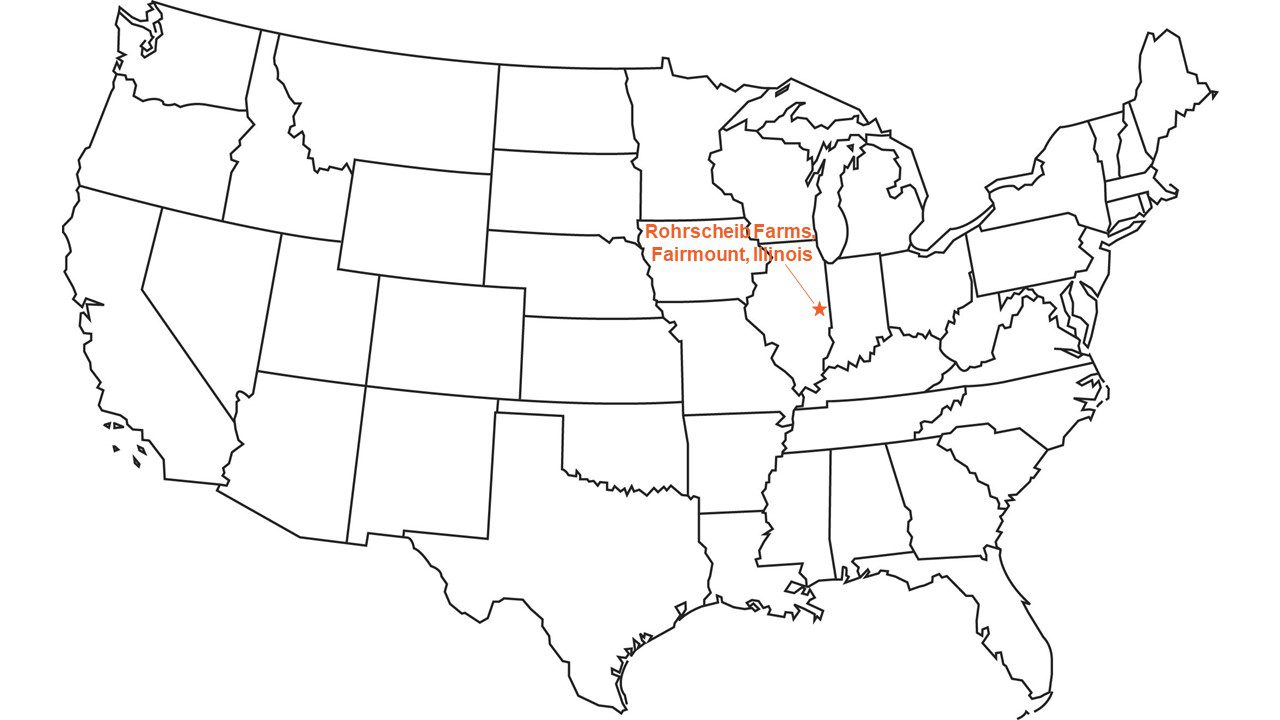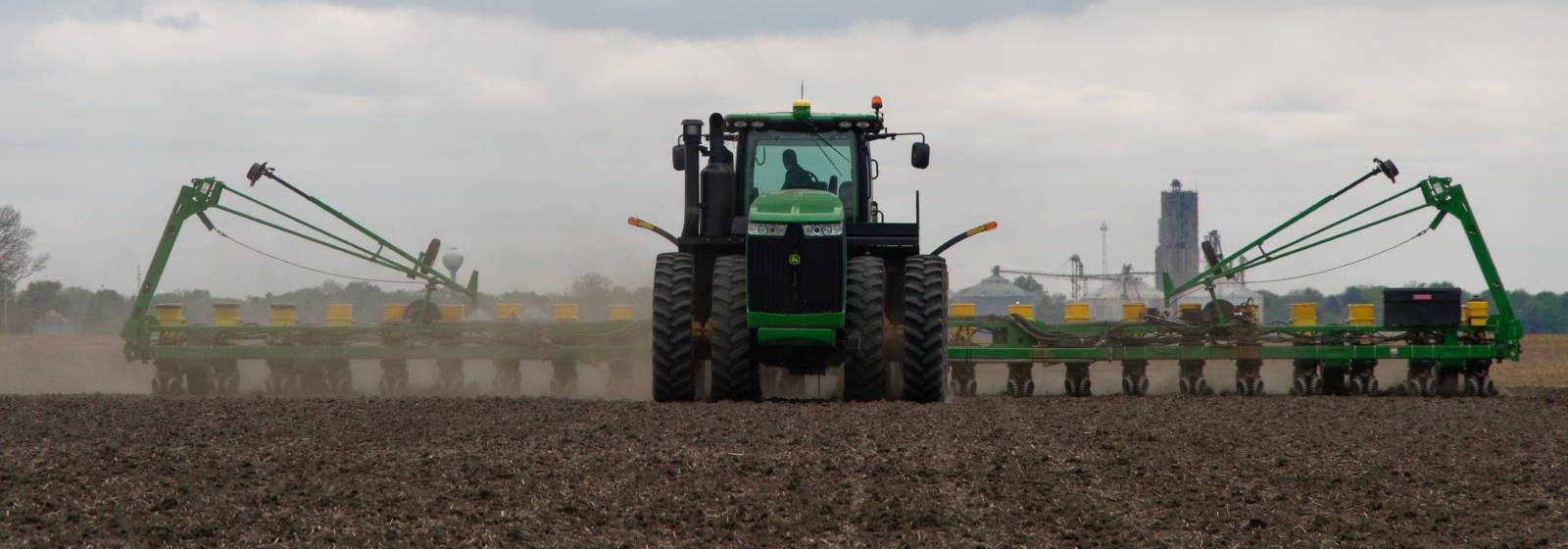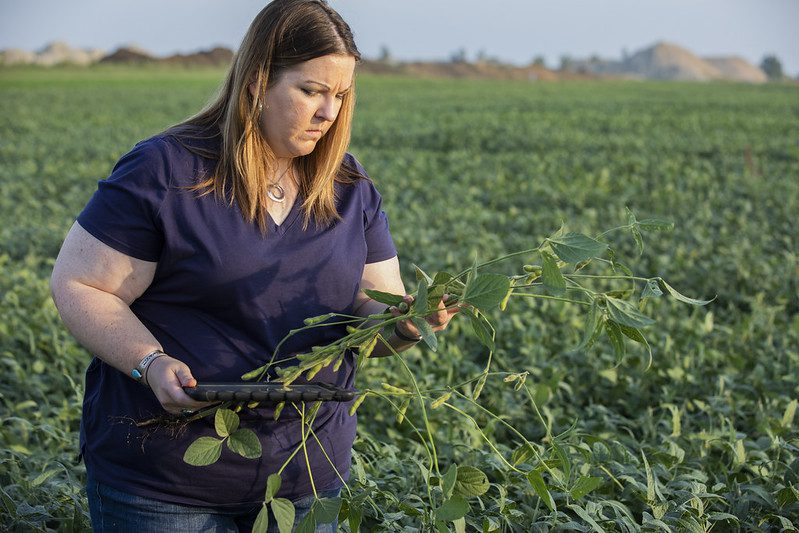
Throughout the 2022 growing season, USSOY.org will provide regular Ground Work updates from several U.S. soybean farmers around the country. Follow their updates, #GroundWork2022, to learn about their farms and commitment to producing a reliable, sustainable supply of high-quality soy.
Lynn Rohrscheib shadowed her father and her grandparents as she grew up on her family’s farm in Illinois, in the heart of the U.S. Midwest.
“When I was young, I was probably more in the way than anything,” she laughs. “But the more I got involved in the farm, the more passion I developed.”
That passion fueled Lynn to continue farming on weekends during college as she earned a degree in plant and soil sciences. She is now part of the ninth generation of farmers in her family, and the fifth generation to farm in their current location, about 225 km, or 140 miles, south of Chicago, Illinois, and about 175 km, or 110 miles, west of Indianapolis, Indiana.
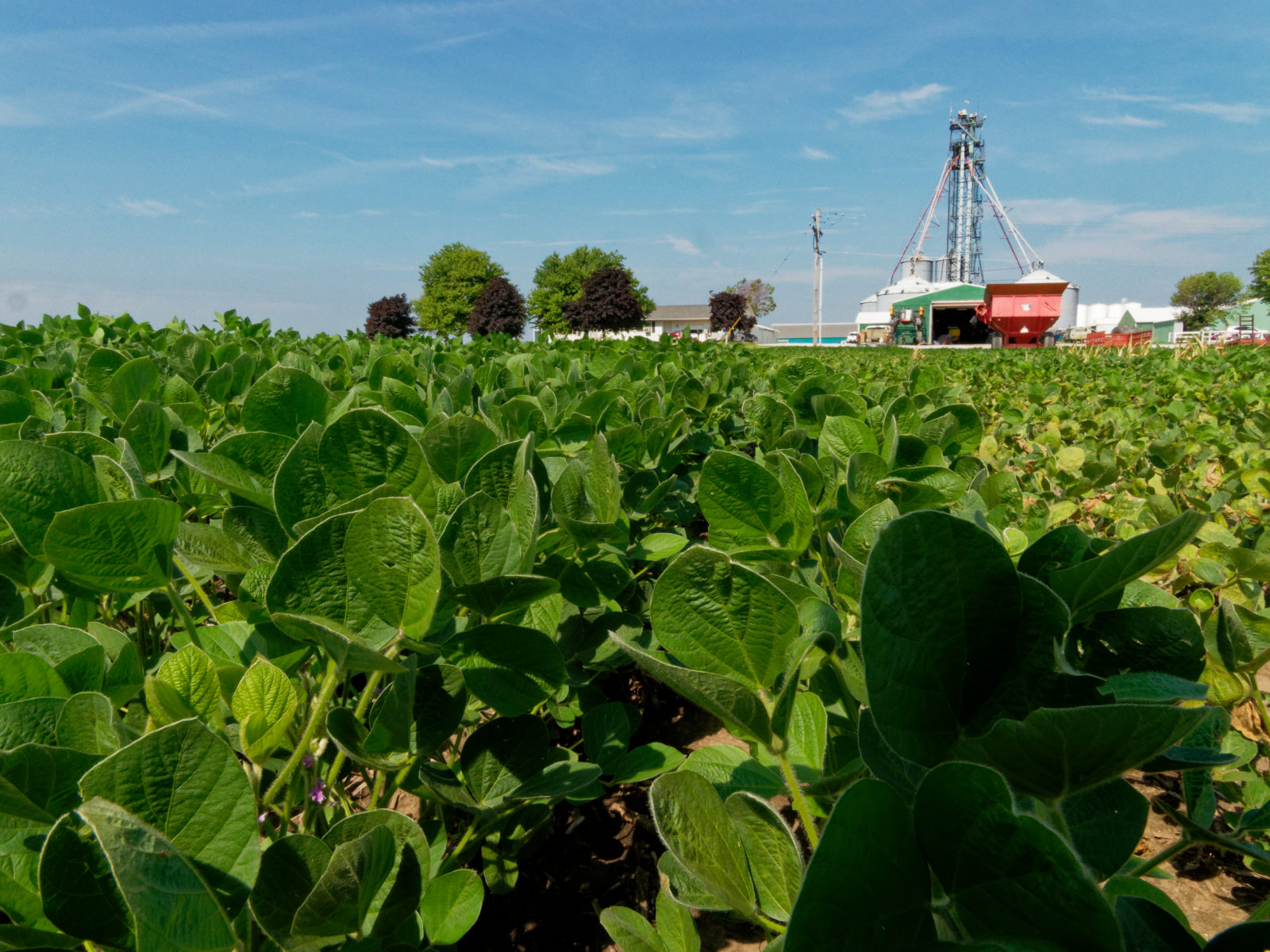
Today, Lynn farms with her parents, Vernon and Mary, and her younger sister Stacey. Together, they farm about 2,955 hectares, or 7,300 acres, of soybeans and corn. Their fields cover a large footprint, as far as 56 km, or 35 miles, both north and south of their home farm. They farm up to 24 km, or 15 miles, to the west and 48 km, or 30 miles, to the east, which includes fields in the neighboring state of Indiana.
In addition to farming, Stacey teaches agriculture for a local school district. Her husband Aaron is a mechanic for a local farm equipment dealer. Lynn’s fiancé, Brandon, farms with his family near Brook, Indiana, about 145 km, or 90 miles, northeast of the Rohrscheib farm, though he does help Lynn and her family when he can. Lynn and Brandon have a 7-month-old son, Brock, the first member of the next generation with the potential to farm.
“Brock is already excited about tractors and semis, and we look forward to learning if he shares our passion for farming,” Lynn says.
The Rohrscheibs also own a custom agricultural input supply business that sells seed, chemicals and fertilizer to other farms. This business also does custom application work, applying inputs for other farmers to an average of 12,140 hectares, or 30,000 acres, each year. They employ a crew of 15 on the farm and for the custom input supply and application business.
As a new mother, Lynn’s role on the farm has shifted a bit.
“While I am still involved in the day-to-day work and decisions about what the crew is doing, inputs, where we are working, bookwork and more, I am spending significantly less time in the tractor,” she says.
She continues to manage much of the data and information they gather and use to make those daily decisions.
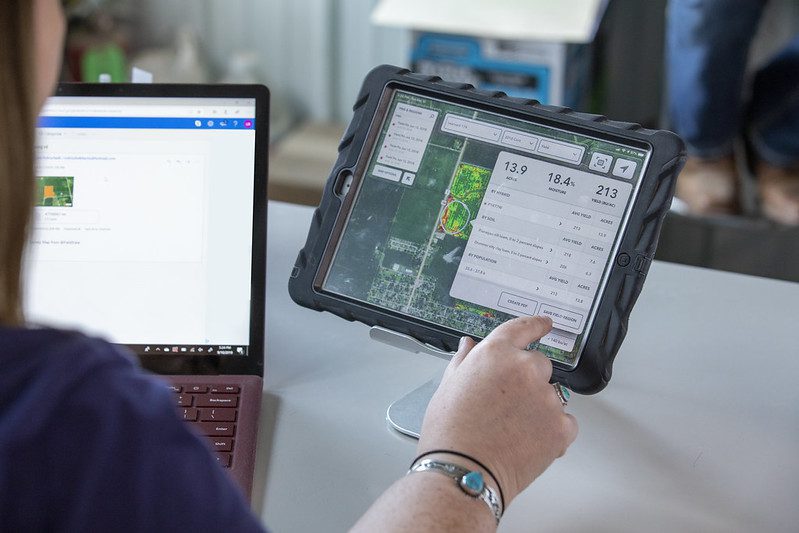 “We rely on innovation in technology, equipment, inputs and more in everything we do,” Lynn explains. “For example, I constantly use an online platform on the computer and all our mobile devices to manage what is happening in all our fields. All our equipment uses technology to monitor what we put in the ground and how we care for the crops. And apps for mobile devices help us keep track of what is getting done.”
“We rely on innovation in technology, equipment, inputs and more in everything we do,” Lynn explains. “For example, I constantly use an online platform on the computer and all our mobile devices to manage what is happening in all our fields. All our equipment uses technology to monitor what we put in the ground and how we care for the crops. And apps for mobile devices help us keep track of what is getting done.”
She adds that variable rate technology allows them to apply inputs like fertilizer just where it is needed — both in their fields and when doing custom input application for other farmers.
“Using just what we need makes us more sustainable,” Lynn continues. “Innovations provide information so we see in real time what is happening with our equipment. If a row on a planter stops working correctly, the tractor driver can see that right away in the cab and fix the problem.”
On-farm technology has made it easier to manage the many types of soybeans and corn they grow. They raise non-GMO soybeans, white and yellow food-grade corn and commodity corn.
“We value biotechnology and the benefits it provides for farmers, and we use it, especially in corn,” Lynn says. “However, the premiums available for non-GMO crops and our ability to deliver to a variety of customers make them a good fit for our farm.”
Some of their soybeans are exported in containers to Asian markets. The rest of their soybeans become meal for poultry feed in the southeastern U.S. and oil for salad dressing and similar products. They raise white corn for tortillas, chips and other food. Yellow food-grade corn goes to other products, including cereal. Their conventional, GM corn is exported via the Mississippi River system.
Lynn’s passion for agriculture and understanding markets — and her tendency to shadow her father — led her to get involved in the industry.
“My dad served on the state soybean checkoff board when I was growing up, so I watched him get involved in the industry,” she says. “When I fully joined the farm, I wanted to learn how our soy checkoff dollars are used.”
She served as a director for the Illinois Soybean Association, and she now serves on the United Soybean Board. Her industry service showed her the importance of innovation in the soybean industry.
“Our investments in innovation for new soybean markets and uses have helped farmers stay profitable while benefiting our customers with high-quality soy,” Lynn explains.
She has visited customers around the world, but one moment stands out: “We were visiting a small soy milk producer in Taiwan who explained that he bought a specific soybean variety,” she remembers. “That variety was one we grew, and I realized he could use the soybeans we produce. Then, we saw a shipment of U.S. soybeans come in that included that variety. I realized how small the world is, and the importance of what we do for our customers.”
Lynn will share regular updates from her farm on USSOY.org throughout 2022. She will explain how investments in innovation help her family produce high-quality, sustainable soybeans and corn. Lynn and Rohrscheib Farms can also be found on Facebook, Instagram, LinkedIn and Twitter.
